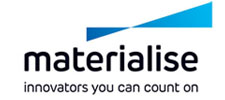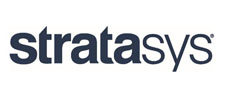RSNA-ACR 3D Printing Registry
The joint RSNA and American College of Radiology (ACR) 3D printing clinical data registry collects 3D printing data at the point of clinical care. With the goal of improving both patient care and characterizing resource utilization, the brand-new registry collects anonymized 3D printing case information, clinical indications and intended uses for printed models, source imaging, model construction techniques and effort, 3D printing techniques and effort, and the clinical impact of the models.
Inclusion criteria
The registry aims to include all clinical cases of image-based 3D printed anatomic models and surgical guides created at the point of care (within a hospital or clinic) as part of routine patient care—with the exception of models constructed with biologic materials, implanted devices and external prostheses.
Important note: Cases performed during 2015 or later may be submitted to the registry. However, it is expected that most case submissions will be current cases, rather than historical cases.
Benefits of participation
By participating in the 3D printing registry, your data will help to answer key analytic questions.
Profiling the indications for clinical 3D printingCertain diseases are known to be important areas for creating printed models, such as congenital heart disease and craniomaxillofacial surgery. How large of a case volume do these cases represent? What are the relative case volumes for these and other indications for clinical 3D printing?
Standards/trends in the use of 3D printing
How complex are the models being made? How often are multiple imaging modalities used to create models? How much effort is required to create these models? How often do they incorporate multiple anatomic parts? How frequently are anatomic guides being printed, and for what purposes?
Profiling the printing technology and materials in use
3D printing machines range widely in cost and are variously capable of printing in a variety of materials with a wide range of physical properties. What technologies and materials are most used, for which organ systems and for which tissue types?
Enroll
Enrollment in the 3D printing registry is open and can be done at any time—there is no deadline to participate. Details on the full registration process can be found on the NRDR knowledge portal.
There is a one-time application fee of $500 and a $500 annual fee.
Note: Because the GRID and DIR registry fees cover an entire practice, the 3D Printing registry annual fee is waived for these participants.
Resources
- Watch: RSNA-ACR 3D Printing Registry: A User’s Guide
- Join: RSNA 3D Printing Special Interest Group
- Read RSNA News: RSNA and ACR to Collaborate on Landmark Medical 3D Printing Registry
Contact Us
If you have questions about the 3D printing registry, please email 3DSIG@rsna.org.
Vendor contributions



